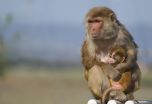Scientists find DNA is packaged like a yoyo
Research team finds DNA uncoils from nucleosome asymmetrically in recent publication in Cell
2015-03-16
(Press-News.org) To pack two meters of DNA into a microscopic cell, the string of genetic information must be wound extremely carefully into chromosomes. Surprisingly the DNA's sequence causes it to be coiled and uncoiled much like a yoyo, scientists reported in Cell.
"We discovered this interesting physics of DNA that its sequence determines the flexibility and thus the stability of the DNA package inside the cell," said Gutgsell Professor of Physics Taekjip Ha, who is a member of the Carl R. Woese Institute for Genomic Biology at the University of Illinois. "This is actually very elementary DNA physics. Many people thought we should have known this many decades ago, but there are still surprises in the physics of DNA."
The DNA is packaged into chromosomes, which resemble beaded bracelets. The string of DNA is coiled around beads, called histones, to create nucleosomes. These nucleosomes are braided together into beaded strings that are intricately woven into chromosomes.
Scientists knew the DNA could be uncoiled from the nucleosome, but it was assumed that the two ends were symmetric, meaning uncoiling the DNA would be like untying a shoe. University of Illinois researchers found that the DNA is actually very asymmetric, like the string wrapped around a yoyo. Pulling on one end of DNA will simply tighten the coil while pulling on the other will cause it to uncoil like a yoyo.
The physics of this nucleosome packaging is determined by the DNA's sequence, which makes the strand of DNA flexible enough to satisfy two conflicting principles: it has to be stable enough to compact DNA, but dynamic enough so the strand can be uncoiled and read to make proteins.
"There are many good studies that show that if you change the sequence of the gene, then it will affect other things. Different proteins may be created because they require certain sequences for binding and so on," said Ha. "But no one had really thought about sequence changes having an effect on DNA physics, which in turn cause changes in the biology."
Ha's research has shown that it is easier for the cell's protein-making machinery to read from the "weak" end of the nucleosome that uncoils more easily. They believe that genetic mutations related to diseases, like cancer, alter the stability of the nucleosome.
"This could have a major impact on how the information is read out and how different proteins are produced," Ha said. "For example, cancer-fighting proteins or cancer-causing proteins may be made differently depending on the changes in DNA flexibility and stability caused by mutations."
Next Ha plans to use next generation sequencing to determine the flexibility of an entire genome. He hopes to create the first genome-wide map of physical properties. He also wants to find out if mutations can make the DNA easier or more difficult to read.
INFORMATION:
This work was supported by the National Science Foundation, the National Institutes for Health, and the Howard Hughes Medical Institute. Ha's research team included Thuy Ngo, a graduate research assistant; Jaya Yodh, Research Assistant Professor and CPLC Director of Education and Outreach; Qiucen Zhang, a postdoctoral research associate; and graduate student Ruobo Zhou.
The paper, "Asymmetric Unwrapping of Nucleosomes under Tension Directed by DNA Local Flexibility," is available online (http://dx.doi.org/10.1016/j.cell.2015.02.001).
[Attachments] See images for this press release:

ELSE PRESS RELEASES FROM THIS DATE:
2015-03-16
Mayo Clinic research finds direct evidence of gadolinium deposition in neuronal tissues following intravenous administration of gadolinium-based contrast agents used in MRI exams. The findings were recently published online in the journal Radiology.
In this study, Mayo Clinic identified patients who donated their body to medical research and had undergone multiple gadolinium contrast-enhanced MRI exams during their lifetime. Brain tissue samples from these patients were then compared to donors who had never received a gadolinium contrast agent. The patients exposed to ...
2015-03-16
DURHAM, N.C. -- The warm soft folds of the intestines are teeming with thousands of species of bacteria. Collectively known as the gut microbiome, these microbes help break down food, synthesize vitamins, regulate weight and resist infection.
If they're so key to health, what factors shape an individual's gut microbial makeup?
Previous studies have pointed to the food we eat, the drugs we take, genetics, even our house dust. Now, a new study in baboons suggests that relationships may play a role, too.
The researchers studied social interactions, eating habits and ...
2015-03-16
The global human population is growing faster than the water supply. Investigators recently analyzed various models and trends to assess both optimistic and pessimistic projections of future water use and shortages.
"Historically, water supply has grown through alternating periods of rapid growth and stagnation, and we now seem to be entering a new period of stagnation while the population continues to grow," said Dr. Anthony Parolari, lead author of the WIREs Water article. "To avoid water scarcity from this point forward, the alternatives include further water supply ...
2015-03-16
Human babies appear to need more of a nutritional boost from breast-milk proteins than do infants of one of their closest primate relatives, suggests a study comparing human milk with the milk of rhesus macaque monkeys.
The research team, led by the University of California, Davis, came to this conclusion after developing a new technique for comparing the proteome -- all detectable proteins -- of human milk with the proteome of the rhesus macaque monkey.
The researchers expect the findings will provide a better understanding of human breast-milk composition and identify ...
2015-03-16
A new study highlights the complicated spillover effects of incarceration on the quality of relationships.
Although paternal incarceration in the past 2 years was mostly inconsequential for fathers' reports of relationship quality, mothers connected to these recently incarcerated men reported lower overall relationship quality, lower supportiveness, and greater physical abuse. Surprisingly, current paternal incarceration was positively associated with some indicators of relationship quality.
"The fact that current and recent paternal incarceration have countervailing ...
2015-03-16
MAYWOOD, Ill. (March 16, 20125) - Minimally invasive surgery can prevent a fatal rupture of an abdominal aortic aneurysm.
And now a new study has found the procedure can extend lives even in patients who are at high risk for surgery due to such risk factors such as advanced age, diabetes, smoking and kidney disease.
However, not all high-risk patients - especially those undergoing cancer treatment -- benefit, the study found. The decision on whether to perform the procedure "should be individualized, depending on the number and severity of risk factors," reported corresponding ...
2015-03-16
Improving the efficiency by which crops use water is a critical priority for regions facing increased drought or diminished groundwater resources. Now researchers have found that this can be achieved by genetically altering plants' stomata, the tiny openings on the leaf surface through which carbon dioxide is absorbed and water evaporates.
"We now have genetic tools to pre-adapt crops to future, drier climates. The goal here is to maintain or improve productivity with less water," said Dr. Peter Franks, lead author of the New Phytologist study.
INFORMATION: ...
2015-03-16
EVANSTON, Ill. --- A Northwestern University-led study in the emerging field of nanocytology could one day help men make better decisions about whether or not to undergo aggressive prostate cancer treatments.
Technology developed by Northwestern University researchers may help solve that quandary by allowing physicians to identify which nascent cancers are likely to escalate into potentially life-threatening malignancies and which ones will remain "indolent," or non-aggressive.
The prostate-specific antigen (PSA) test was once the recommended screening tool for detecting ...
2015-03-16
A new study led by Elizabeth Archie, Clare Boothe Luce Asistant Professor of Biology at the University of Notre Dame, has found that social interactions have direct effects on the gut microbiome.
Archie points out that most, if not all, animals have a gut microbiome -- an incredibly diverse "rainforest" of bacteria that lives in the intestine and helps animals digest food, make vitamins and fight disease.
The new study revealed that baboons that had closer social bonds had more similar gut bacteria than animals with weaker social ties.
"In the last few years, scientists ...
2015-03-16
The MODIS instrument aboard NASA's Terra satellite captured a visible image of Tropical Cyclone Nathan east of the Queensland coast on March 16 at 0:00 UTC. The image showed a rounded circulation with bands of thunderstorms wrapping into the center of circulation.
At 0900 UTC (5 a.m. EDT), Tropical cyclone Nathan's maximum sustained winds were near 55 knots (63.2 mph/102 kph) and the storm was consolidating and organizing. The Joint Typhoon Warning Center (JTWC) forecasters expect Nathan to strengthen to 70 knots in two days.
Nathan was centered near 14.3 south latitude ...
LAST 30 PRESS RELEASES:
[Press-News.org] Scientists find DNA is packaged like a yoyo
Research team finds DNA uncoils from nucleosome asymmetrically in recent publication in Cell



